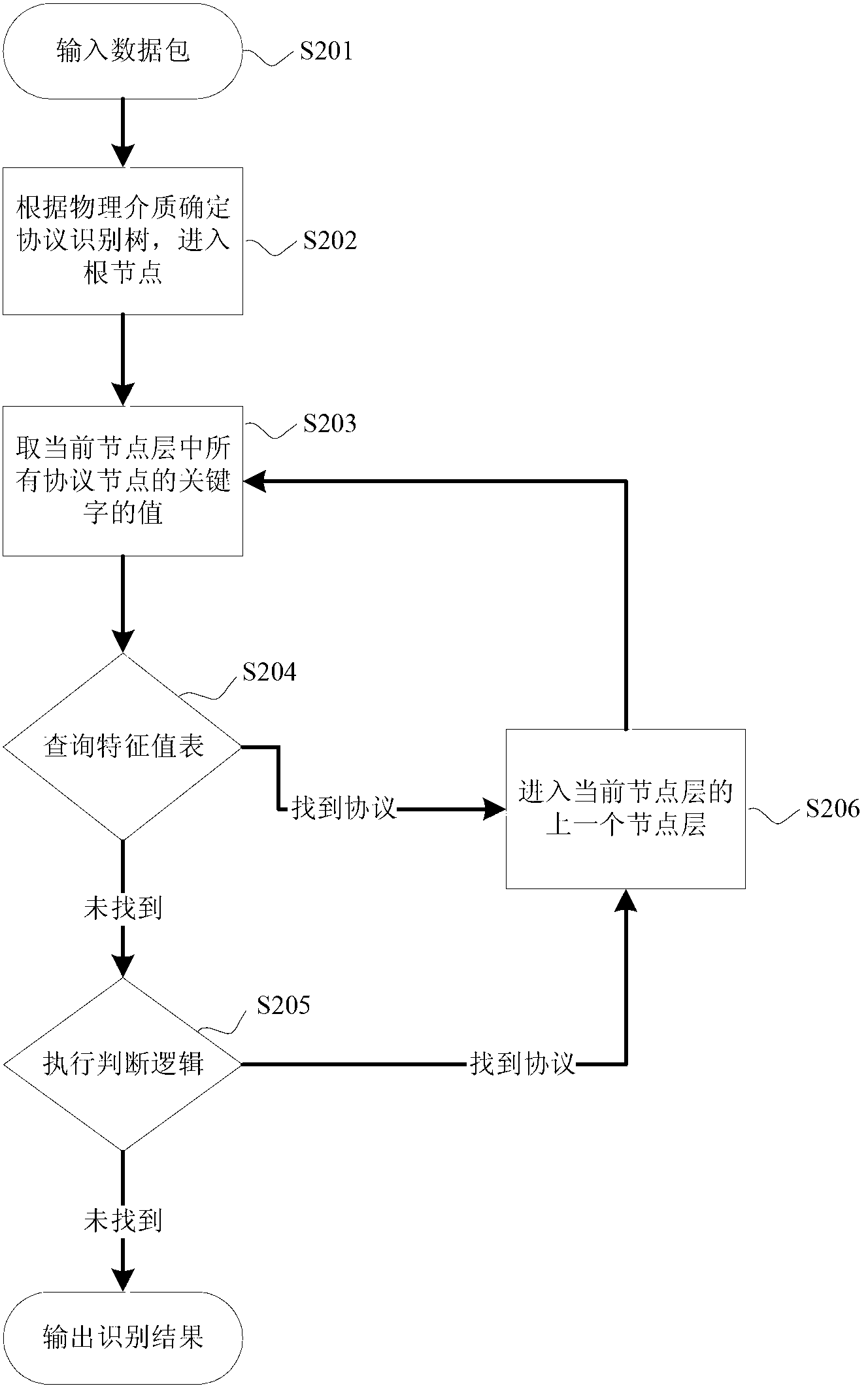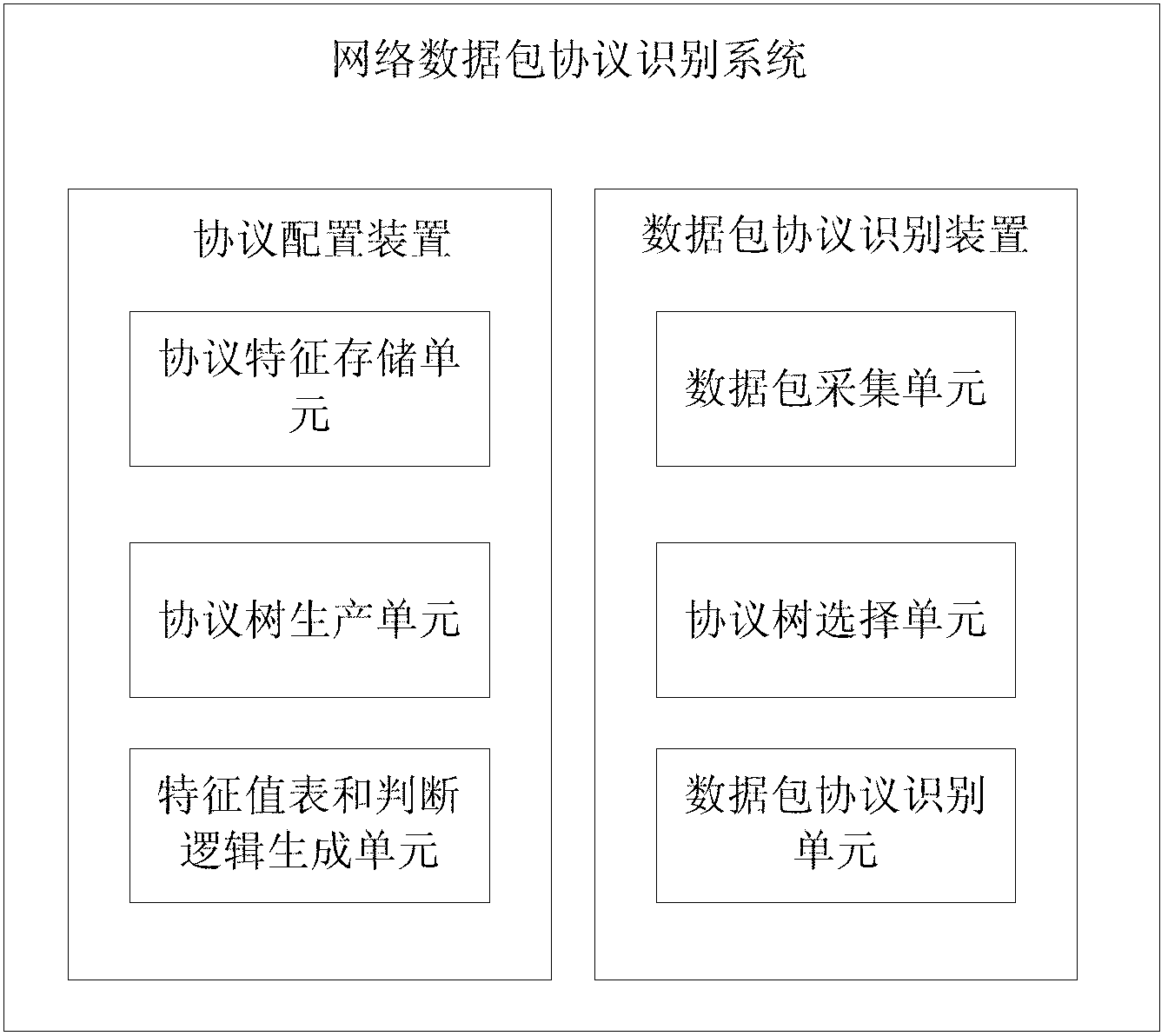Network packet protocol identification method and system
A network data packet and protocol identification technology, applied in the network field, can solve the problems of scalability and processing efficiency, and achieve the effects of improving identification performance, enhancing applicability, and strong scalability
- Summary
- Abstract
- Description
- Claims
- Application Information
AI Technical Summary
Problems solved by technology
Method used
Image
Examples
Embodiment Construction
[0042] The present invention will be further described in detail below in conjunction with test examples and specific embodiments. However, it should not be understood that the scope of the above subject matter of the present invention is limited to the following embodiments, and all technologies realized based on the content of the present invention belong to the scope of the present invention.
[0043] The invention discloses a network data packet protocol identification method, which includes a protocol configuration step and a data packet protocol identification step.
[0044] Such as figure 1 As shown, the protocol configuration steps include:
[0045] S101: Input and store protocol feature information of all protocols.
[0046] In this step, if a new protocol is added, the protocol feature information of the new protocol is input and stored.
[0047] In this step, the protocol feature information (or protocol identification information) includes: the lower-level protoco...
PUM
 Login to View More
Login to View More Abstract
Description
Claims
Application Information
 Login to View More
Login to View More - R&D
- Intellectual Property
- Life Sciences
- Materials
- Tech Scout
- Unparalleled Data Quality
- Higher Quality Content
- 60% Fewer Hallucinations
Browse by: Latest US Patents, China's latest patents, Technical Efficacy Thesaurus, Application Domain, Technology Topic, Popular Technical Reports.
© 2025 PatSnap. All rights reserved.Legal|Privacy policy|Modern Slavery Act Transparency Statement|Sitemap|About US| Contact US: help@patsnap.com



